Interview with Veronika Mayer
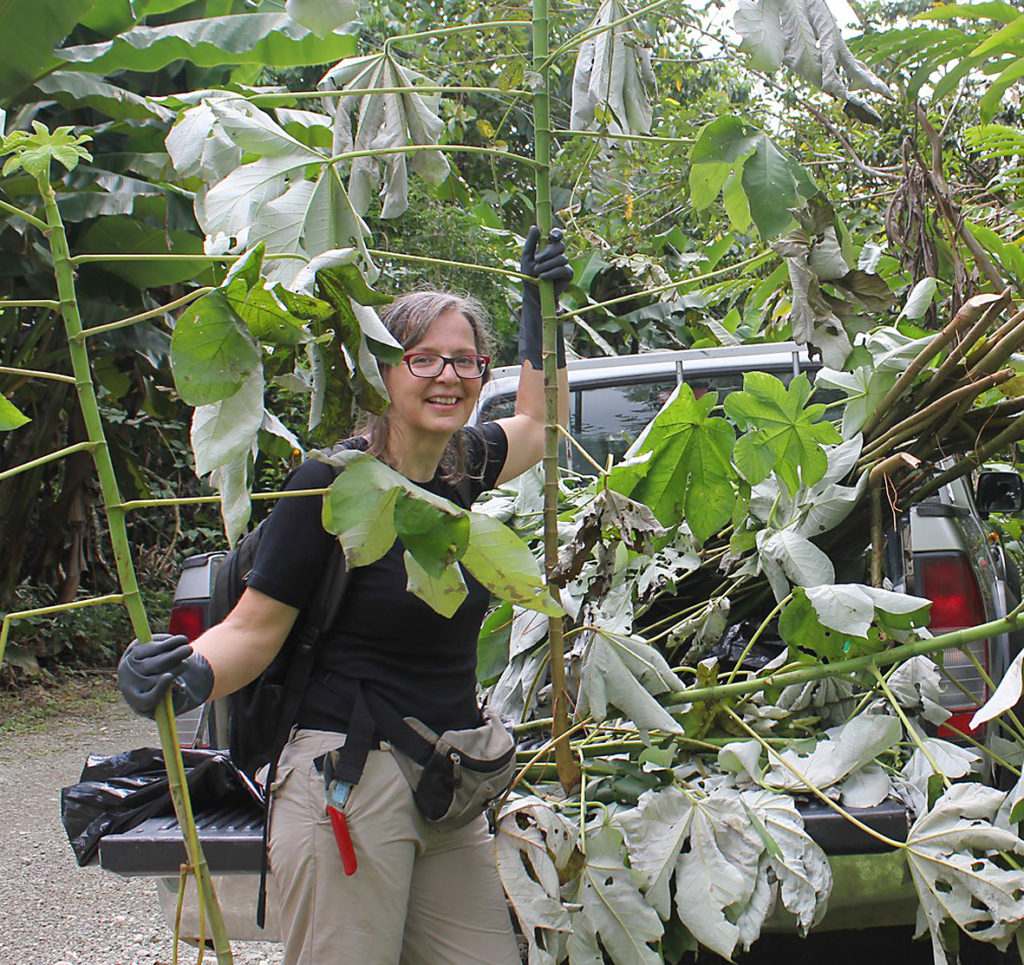
Veronika Mayer is a researcher at the University of Vienna. She investigates ant-plant symbioses in the tropics with special focus on fungiculture and nutrient cycles. In this interview, we talk about the fascination of field work, beautiful ant plants, and, of course, ants.
An Interview compiled by Felix Oberhauser

MNB: Thank you very much for having this interview today with us. To start, could you tell us a bit about your research and how you started studying ants?
VM: I am a botanist and was working with Mediterranean and SE-Asian plants when the University of Vienna founded a research station in the tropics in southern Costa Rica. Two of my colleagues, Werner Huber and Anton Weissenhofer went there and told me a lot about the rain forest and encouraged me to visit them. When I did so in the late nineties, I was in the tropical rain forest for the first time and the only animals I saw everywhere were not monkeys or cougars, but ants. I was very fascinated by leaf-cutter ants and their trails and then my colleagues showed me some ant-plant symbioses. The famous bull-horn acacia, Cecropia trees with the hollow stems inhabited by Azteca ants, and some Melastomataceae, like Clidemia, with their leaf pouches full of ants. This was all so thrilling, and I began side-projects with those ant-plants. I started with the Piper–Pheidole interaction because myrmecophytic Piper plants are frequently found in the understory of the rainforest around the Research Station. Pheidole ants are living in cavities formed by the petioles of some pepper-plants and once the colony needs more nesting space they excavate the living stem. Inside the petiole

MNB: You are doing research for quite a long time now. When looking back, what are the main differences regarding the research back when you started to now?
VM: The main difference is that I spent a lot of time observing the ants and their
MNB: Coming from botany, would you do something differently if you could start all over again? How did you profit by your botanic background?
VM: I basically love interactions between plants and insects, so I could have ended also in pollination ecology. I think it was rather by chance that I got trapped by studying ants and I did not regret it not a single day. Ants are particularly interesting due to their social
MNB: And what do you enjoy most about ant research?
VM: I enjoy the complexity. It amazes me and makes me happy. Well, sometimes it drives me mad because I often have the impression that I do not really understand the whole picture in it’s full depth. As soon as I understand something, the next window is opening with many new questions behind it. Sometimes, this can be really exhausting. The fun part is, that I never have boring routine work, there is always something new I have to learn and think of. This is the case at the moment with my Cecropia project. I started looking at Cecropia and it’s inhabitants, Azteca ants, and now I am looking at Cecropia, Azteca, and fungi, nematodes, bacteria and coccids which are also important player in this ant-plant universe. I am very curious what is coming next.

MNB: That is definitely a very complex system. Speaking about complexity, what was the biggest obstacle you had to overcome in your research?
VM: When you are working with such a system and you want to have a look at the details, you have to do experiments and observe what happens. To do so, you have to create an artificial environment in which the plant-ants survive and behave more or less “normal”. This turned out to be a big challenge. Furthermore, the sampling we have to do is mortal for the ant colony. This hurts pretty much. And finally, we usually do not get a lot of material out of a colony for analysis. We are using many methods from soil ecology, but the soil people usually have kilos of samples while we get 2 or 3 grams at its best. So the methods always have to be adjusted, there is no standard protocol.
MNB: You have mentioned a complex Cecropia topic you are working on. Can you, in a nutshell, explain us what it is all about?
VM: We found that many ants living in plants cultivate ascomycete fungi of a rather peculiar group, the Chaetothyriales. The ants cultivate their fungi in a sort of compost garden where they put their remains, feces and dead ants and keep it inside their nesting space which means in the hollow stem of a living Cecropia. We once referred to these compost piles as “fungal patches”, but we realized that it contains many other organisms as well, such as bacteria, archaea and tons of tiny little nematodes, not only fungi. And these compost gardens or “fungal patches” are regularly in the vicinity of the brood, which is puzzling, because other ant species do not deposit their detritus near the brood. We have dissected many Cecropia stems, more than 100, inhabited with different Azteca species, and we found these fungal patches regularly in the vicinity of the brood. And when the queen starts a colony, the first thing she does, after she entered the plant and closed the entrance, is to scratch parenchyma off the wall and to infect this pile with fungi, bacteria and nematode eggs and dauer stages. The foundress queen carries the whole cocktail in her infrabuccal pocket. Afterwards, she is laying eggs which are, as later the larvae, found in the vicinity of these piles. As the colony grows more and more organic matter is deposited and this little parenchyma piles become the “fungal patches” we know from established colonies. The question now is: what is the function of those patches? Are they for nutrition, are they for producing antibiotics, are they providing something special which the ants need? The patches may also serve for the recycling and storage of nutrients for the development and growth of the colony. Maybe nitrogen or phosphate, or other things like sterols. Or they serve as nutritional backup in case the host plant does not produce enough food bodies due to drought for example. But how this really works has to be investigated.
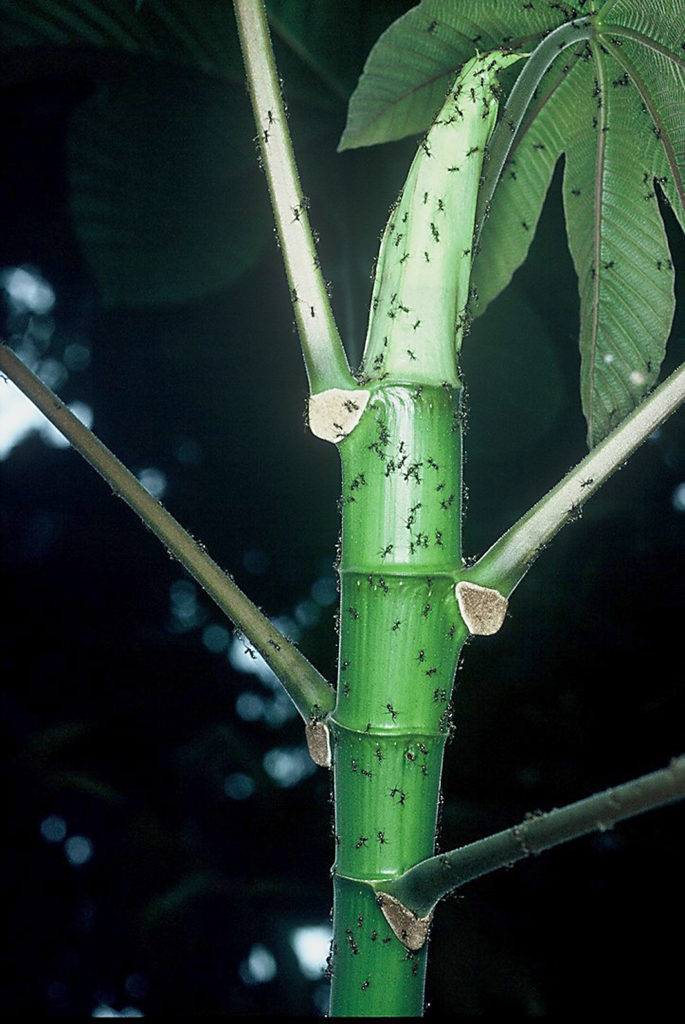
MNB: Do you have any other outstanding stories about your research? Something funny, irritating or scary you experienced while doing research?
VM: Yes, many! There is so much going on during field work in the rain forest. The funniest thing I experienced was during some work on Piper. I was looking for a particular species we had not found so far and I crawled up a very steep hill because I saw some Piper plants up there. Suddenly, I slipped and fell down into a little river. And next to me on the river bank was a black Jaguarundi staring at me and I was staring at the Jaguarundi, and then it quickly disappeared. It was the first and the last time I was face-to- face with a Jaguarundi. They are very shy and you do not see them.
Another funny thing is that I develop some sort of friendship with the ants I am working with during my fieldwork. So, for example, the Pheidole ants I like a lot, while the Pseudomyrmex ants I dislike. Meanwhile, I also like Azteca very much. They are not just animals you are working with, they are more than that. Therefore, it is hard to destroy such a system during research. As I said before: it really hurts but curiosity is a strong force.
MNB: Do you have any favourite morphological structure or phenomenon you enjoy in ant-plants?
VM: Yes! There are two structures I find especially fascinating. The nutritional globules, the food bodies, the plants are producing. For example, Acacia plants provide a food body at the tip of the leaflets. Cecropia plants have special trichomes which are modified to bear food bodies. They even contain phyto-glycogen which is extremely rare in plants. In Cecropia it is exclusively found in the food bodies.
The other structure I find fascinating are the leaf pouches of Melastomataceae. They are parts of leaves which are inflated and which can be used as nesting space by ants. I have not yet seen Myrmecodia because I have never been to tropical Asia, but this is a fascinating structure as well. The nest is formed from a big hypocotyl which creates large chambers and have warts, which are able to absorb nutrients from the refuse piles of the ant inhabitants.
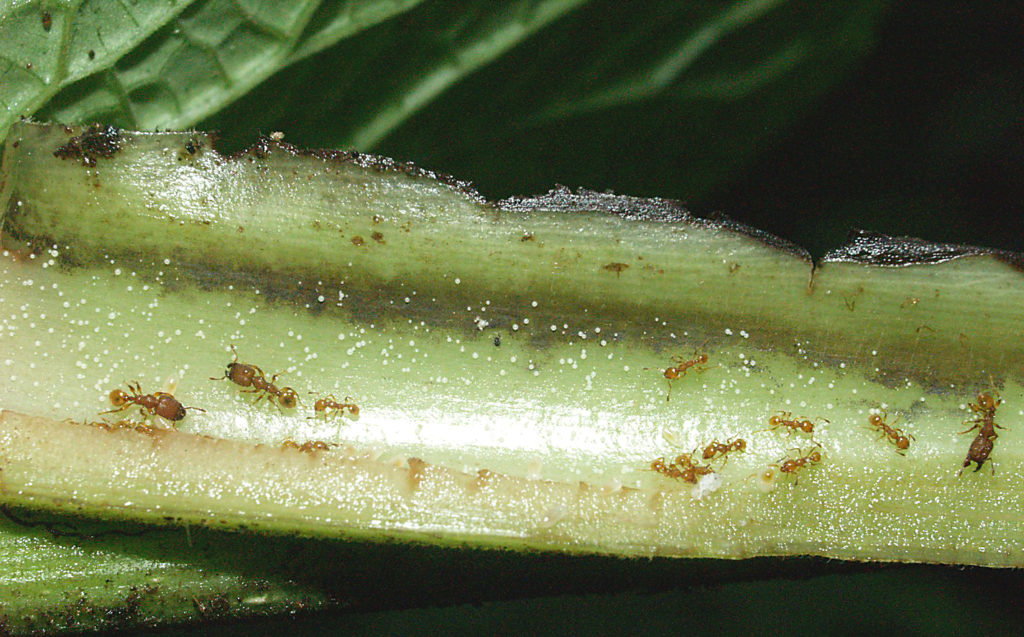
workers. The white globules are the lipid rich food bodies. (© Veronika Mayer)
MNB: Being an experienced researcher yourself, do you have any suggestions for young people just starting in myrmecology?
VM: Yes. Do not lose the fascination and open-mindedness! This is the peculiarity of doing research, there are so many impressive things around us. It gives me a deep modesty. Nature is incredible and has so many surprises to offer. My suggestion is to not only stick to the lab but also go out into the natural habitats to observe your system in the field. The combination of field and lab work is very important.
MNB: The higher the career level, the fewer women, also in ant research – what do you think will be most important for achieving gender equality in this respect, being a woman yourself?
VM: I think the most stressful
MNB: Is there one thing you wished everybody would know about ants?
VM: Most people ask me how to get rid of ants, much to my regret. I always suggest to watch them instead and consider if it is not possible to co-exist with them. I often tell people that ant societies are very similar to human societies. I’d like people to know for example that ants can communicate, with chemicals instead of words. Or that ants can build megacities. That they have nurseries, take care of their ill nest mates, that they can cheat and make war. Most people think that ants are ugly little creatures walking around like little machines. This is not the case. I wished people would see the ants as the fascinating little animals they are.

Mayer)
MNB: If you could be an ant…
VM: I would wish to not be an Azteca ant when Veronika is in the vicinity cutting down my tree. I wish I could do my research without being so destructive.
MNB: What is the book on your bedside table?
VM: Mary Ann Shaffer – The Guernsey Literary and Potato Peel Pie Society. Before I was reading “Blackout” by Marc Elsberg. It is shocking how dependent we are on electricity.
MNB: Watching sports or doing sports?
VM: Doing sports.
MNB: Listening to music or playing an instrument?
VM: At the moment, only listening to music. Unfortunately!
MNB: Do you enjoy the evening or the morning?
VM: The evening!
MNB: Tea or coffee?
VM: Both!
MNB: Habit or change, what do you prefer?
VM: Change.
MNB: Cooking yourself or going out having dinner?
VM: I enjoy cooking with friends while chatting and laughing a lot.
MNB: Aspirator or forceps?
VM: Aspirator.

MNB: Nest densities or pitfall traps, what do you prefer?
VM: Nest densities.
MNB: Field work or lab?
VM: Oh, I enjoy both. I could not be without field work, though.
MNB: Pin or ethanol?
VM: Ethanol.
MNB: Paper printed out or reading on the laptop?
VM: Printed.
MNB: Journals financed by the author (open access) or by the reader (subscription based). What do you prefer?
VM: I prefer open access. I think it should be open for everybody.
MNB: Kin selection or group selection?
VM: Group selection.
MNB: Monodomy or supercoloniality?
VM: Monodomy.
MNB: Ant workers or queens?
VM: Queens.
MNB: Thank you so much for this great interview.
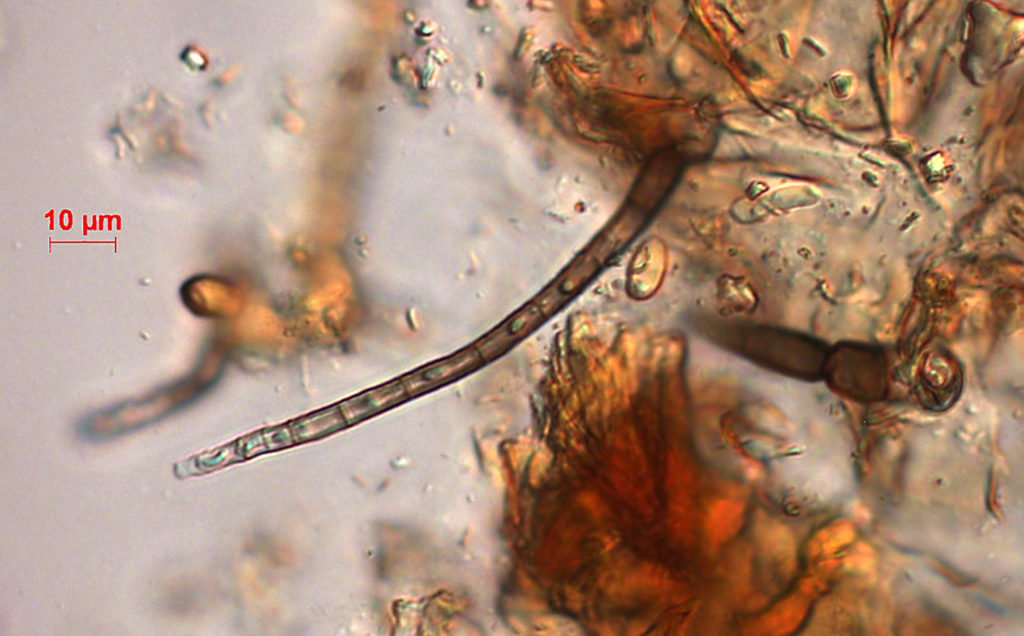



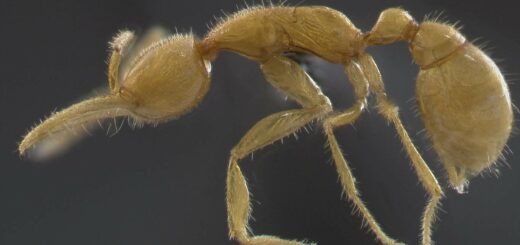
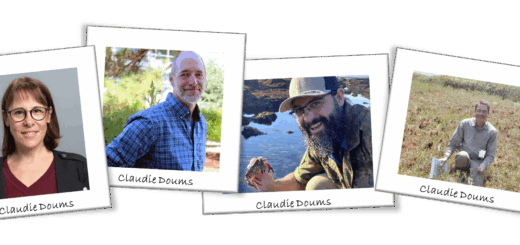
Very nice interview, and great photos!